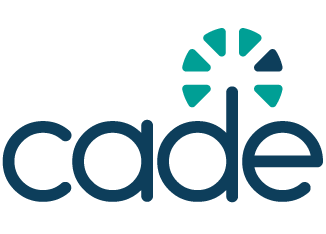CADE Accessibility Statement
01 March 2024
According to the World Bank, one billion people, or 15% of the world population, live with some kind of disability. Many of these disabilities affect access to information technologies and/or can benefit from the use of information technologies, including the Web.
Web accessibility is critically important to people with disabilities around the world, including people with auditory, cognitive, physical, neurological, and visual disabilities. It is likewise essential to those with accessibility needs due to ageing.
Providing accessible web content can also benefit people who do not have disabilities but who are experiencing situational barriers. For instance, when accessing the Web from devices with small screens or in low bandwidth situations, or when encountering obstacles due to language or literacy levels, accessibility solutions can also support improved access.
CADE is committed to ensuring equal access for people with disabilities. A part of our global audience, they are essential contributors to all aspects of CADE’s ecosystem and should not be excluded, rather should be actively supported. We are continually improving the user experience for everyone and applying the relevant accessibility standards.
The Web Content Accessibility Guidelines (WCAG) defines requirements for designers and developers to improve accessibility for people with disabilities. It describes three levels of conformance: Level A, Level AA, and Level AAA. CADE is partially conformant with WCAG 2.1 level AA. Partially conformant means that some parts of the content do not fully conform to the accessibility standard.
CADE is committed to facilitating the accessibility and usability of its websites for persons with sensory disabilities. To accomplish this, the CADE consortium members will be implementing additional aspects of the World Wide Web Consortium’s Web Content Accessibility Guidelines 2.0 Levels A and AA as its web accessibility standard, which will allow the websites to be more accessible to persons with sensory disabilities.
Until such time as our electronic media upgrades are complete, if you have difficulty accessing our website, apps, or intranet to attain information or for any other purpose, please contact us at cade@diplomacy.edu and one of our team members will be happy to assist you.
We also work continuously to ensure that our events, meetings, and classes are as accessible and inclusive as possible.
The W3C Web Accessibility Initiative (WAI) offers more information.
The WAI Web Accessibility Fundamentals Overview gives tools a list of resources, including its Accessibility Principles.
Online event accessibility guide (Zoom)
Resources provided on this page serve as a guide for basic functions in the platforms used in a typical Zoom online event.
Platform
- You can access CADE webinars either through the Zoom application (available for Windows, Mac, Android, and iOS platforms) or via the browser on your computer.
- Official download link: https://zoom.us/download
- Each meeting has a unique 9, 10, or 11-digit number called a meeting ID that might be required to join a Zoom meeting. This number is on the reminder email sent an hour before each event.
- If you are joining via telephone, you will need the teleconferencing number provided in the event reminder email.
Listening to an event (audio only)
- The audio for most events is broadcast through your computer or another device in the Zoom app. Please make sure that your speakers are turned on or your headphones are plugged in.
- If you do not have sound capabilities on your computer or prefer to listen by phone, without using the Zoom app, you will need the teleconferencing number provided in the invitation.
- Mobile devices supported for Zoom teleconferencing include iPhone, iPad, Android, and Blackberry phones with the following operating systems:
- MacOS X with macOS X (10.11) or later
- Windows 10, Win 11,
- Ubuntu 12.04 or higher
- Oracle Linux 8.0 or higher
- iOS 8.0 or later
- Android 5.0x or later
- Commands for managing sound can be found on the lower-left part of the screen under the microphone icon
 on the call screen.
on the call screen.
Captioning
- Real-time machine captioning is provided in Zoom for this type of event.
- The captioning function can be activated using the Closed caption button
on the lower part of the Zoom screen or clicking on the More option.
- For information about captioning on streaming, please see the Streaming section below.
Chat and submitting questions
- Any time during the event you can type your question in the Chat panel in the Zoom application.
- If the chat panel is not automatically visible from the start, you can activate it by clicking on the Chat icon in the lower part of the Zoom screen or by clicking on the More option
.
Streaming
Some events will be streamed on YouTube. When available, links will be provided to registrants via email before the start of the event.
Technical assistance
- Before and during the meeting, you can send questions to cade@diplomacy.edu / webinars@diplomacy.edu.
- During the event, you can send a private chat message to the DiploHost user in the Zoom chat and ask for assistance.
If you have any accessibility challenges, please let us know as soon as possible, so we can try to accommodate you during the session. Your feedback, including suggestions, is welcome at cade@diplomacy.edu, as we work continuously to improve our systems.


